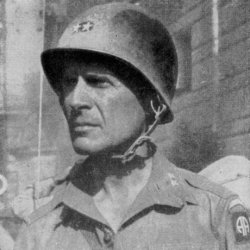 |
About Matthew B. Ridgway
Born in Fort Monroe, Virginia, graduated
from Boston English High School, Boston, MA in 1912 and from West Point,
where he served as a manager of the football team. In 1917, he was commissioned
a Second Lieutenant in the U.S. Army. After returning to West Point as
an instructor in Spanish the year after he graduated, Ridgway completed
the company officers' course at the United States Army Infantry School
in Fort Benning, Georgia, after which he was given command of a company
in the 15th Infantry. This was followed by a posting to Nicaragua, where
he helped supervise free elections in 1927.
In 1930, he became an advisor to
the Governor General of the Philippines. He graduated from the Command
and General Staff School at Fort Leavenworth, Kansas in 1935 and from the
Army War College at Carlisle Barracks, Pennsylvania in 1937. During the
1930s he served as Assistant Chief of Staff of VI Corps, Deputy Chief of
Staff of the Second United States Army, and Assistant Chief of Staff of
the Fourth United States Army. General George Marshall was impressed with
his performance and he assigned Ridgway to the War Plans Division shortly
after the outbreak of World War II in Europe in September 1939. He served
in the War Plans Division until January 1942, and was promoted to brigadier
general that month.
In August 1942, Ridgway was promoted
to major general and was given command of the 82nd Division, upon Omar
N. Bradley's assignment to the 28th Infantry Division. The 82nd, having
already established a combat record in WWI, had earlier been chosen to
become one of the army's five new airborne divisions. The conversion of
an entire infantry division to airborne status was an unprecedented step
for the U.S. Army, and required many hours of training, testing, and experimentation.
~Wikipedia |




